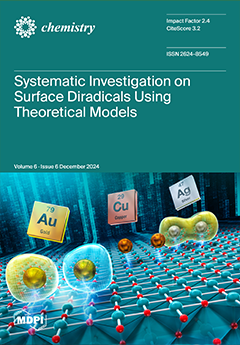The chemical profiling of ethyl acetate extract of the endophytic fungus
Pleosporales sp. using liquid chromatography–electrospray ionization–mass spectrometry (LC-ESI-MS) revealed the presence of 12 metabolites of different chemical classes such as steroids, α-pyrones, asterric acid derivatives, and quinones. Additionally, the gas chromatography–mass spectrometry
[...] Read more.
The chemical profiling of ethyl acetate extract of the endophytic fungus
Pleosporales sp. using liquid chromatography–electrospray ionization–mass spectrometry (LC-ESI-MS) revealed the presence of 12 metabolites of different chemical classes such as steroids, α-pyrones, asterric acid derivatives, and quinones. Additionally, the gas chromatography–mass spectrometry (GC-MS) profiling of the ethyl acetate (EtOAc) and methanol extracts exhibited the presence of fatty acids and their esters, in which methyl palmitate (18.72%, and 25.48%, respectively) and methyl linoleate (11.92% and 23.39%, respectively) were found in both extracts. On the other hand, palmitic acid (12.60%), methyl oleate (26.90%), oleic acid (4.01%) and linoleic acid (3.25%) were present only in methanol extract. Furthermore, ethyl palmitate (12.60%), 13-octadecenoic acid (19.36%), and ethyl linoleate (3.25%) occurred in EtOAc extract. A phytochemical investigation of both extracts led to the isolation of fatty acids such as palmitic acid (
18), oleic acid (
20), and linoleic acid (
21) and their esters including methyl palmitate (
13), methyl stearate (
22), methyl linoleate (
16), methyl 3-hydroxy-5-methylhexanoate (
23), and monomethyl azelate (
27), in addition to monoacyl derivatives of glycerol such as 3,3-dihydroxypropyl hexadecanoate (
24), 2,3-dihydroxypropyl elaidate (
25), and 1-linoleoyl-sn-glycerol (
26). The structures of the isolated compounds were identified by different spectroscopic analyses including
1H- and
13C-NMR and GC-MS. The EtOAc extract exhibited a cytotoxic effect against MCF-7 and HepG-2 cell lines, with IC
50 values of 4.12 ± 0.10 and 10.05 ± 0.05 μg/mL, respectively.
Full article





